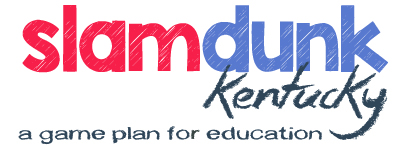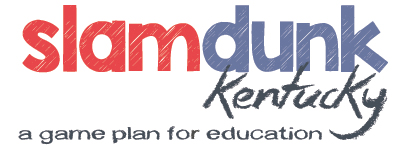Kentucky’s Social Studies Standards Call for Deep Engagement
We want Kentucky students to be increasingly able to “Think and solve problems in school situations and in a variety of situations they will encounter in life.” Yesterday’s post looked at how our science standards call for deep work to meet that expectation from our 1990 Kentucky Education Reform Act. Now, let’s turn to social studies, where our standards value problem-solving that includes attention to diverse perspectives and sustained work to develop shared and democratic decisions.
Examples of our social studies standards
Problem-solving matters across all grades in social studies. To give just a small taste:
- Kindergartners should be able to “Construct an argument to address a problem in the classroom or school.
- Third-graders should be able to “construct an explanation, using relevant information, to address a local, regional or global problem”
- Seventh grade students should be able to “analyze a specific problem from the growth and expansion of civilizations using each of the social studies disciplines”
Diverse perspectives get special attention in understanding social studies problems. As they work, students are also expected to discover that people all around them (and in all periods of the past) can see issues quite differently, and the standards expect students to grow steadily more skilled in understanding those varied views, Kentucky is working to equip:
- First graders to “identify information from two or more sources to describe multiple perspectives about communities in Kentucky”
- Fifth graders to “analyze primary and secondary sources on the same event or topic, noting key similarities and differences in the perspective they represent”
- Seventh graders to “Analyze evidence from multiple perspectives and sources to support claims and refute opposing claims, noting evidentiary limitations to answer compelling and supporting questions”
Shared decisions on solutions required intensive work in social studies, where the overall goal is to equip young citizens. Thus, our standards call for:
- Second graders who can “use listening and consensus-building procedures to discuss how to take action in the local community or Kentucky”
- Fourth graders who can “Use listening and consensus-building to determine ways to support people in transitioning to a new community.”
- Eight graders who can “Apply a range of deliberative and democratic procedures to make decisions about ways to take action on current local, regional and global issues”
All three elements –problem solving, understanding perspectives, and building shared decisions—come together at the high school level. There students are asked to “engage in disciplinary thinking and apply appropriate evidence to propose a solution or design an action plan relevant to compelling and/or compelling questions in civics” and do matching work on solutions and action plans in economics, geography, U.S. history and world history.
Working within a cycle of inquiry
Those examples and others like them reflect an “inquiry cycle” built into our social studies approach. As you can see from the graphic illustration below (taken from the standards document itself, Kentucky expects students to deepen their skills each year through work on:

- Questioning, which includes both developing major compelling questions that are “open-ended, enduring and centered on significant unresolved issues,” and smaller supporting questions for exploration on the way to answering the compelling ones.
- Investigating using the content, concepts and tools of civics, geography, economics, and history to gain insight into the questions they study
- Using evidence from their investigations to build sound explanations and arguments to support their claims
- Communicating conclusions to a variety of audiences, making their explanations and arguments available in traditional forms like essays, reports, diagrams and discussions and also in newer media forms. The introduction to the social studies standards advises that: “ A student’s ability to effectively communicate their own conclusions and listen carefully to the conclusions of others can be considered a capstone of social studies disciplinary practices.”
Do notice that the second part of the cycle –the disciplinary investigation phase– includes robust detail on working with specific content knowledge each year. These are standards for focused inquiry, organized in thoughtful sequences that connect disciplines and build understanding grade by grade. The problem-solving skills are integrated into that framework of needed knowledge and understanding.
You can get a fuller sense of how these elements work together in each grade from the full standards document, which is definitely worth your close attention.
Problem-solvers now and years from now
Students who take on this kind of problem solving will be participating citizens right here, right now. To learn these capacities, they’ll have to explore varied experiences and understandings, listen to one another, and collaborate to complete big projects and assignments. Done well, those will be challenging, satisfying, memorable parts of each learner’s school years.
Students who solve problems in this inquiry-driven way will also be building skills that can last a lifetime. Imagine communities where many residents are good at this kind of exploring, listening, collaborating, and working toward shared decisions. They’ll be better at tackling local issues than we are today. They’ll be ready to take on bigger problems together and find bolder solutions, with rich results for each of them and all of us.
A note on organization: the science standards and the social studies standards took on a similar design challenge, trying to combine (a) high expectations for students engaging in key practices of scientists, historians, and other practitioners and (b) a lean statement of very important disciplinary content. In the science version, each performance expectation marries a specific practice with a scientific topic. In social studies, there are distinct (though tightly connected) standards for the major inquiry practices and for the investigations into content in each discipline. My take is that the social studies approach has a major benefit in inviting teachers to develop varied ways to apply practices to topics. The science approach could mean that teachers will only feel free to work on the specific practice/content combinations listed as our performance expectations. I support both, but I do think the social studies version invites richer learning opportunities.
Science Standards
Problem-Solving: Kentucky’s Science Standards Go Deep
I’m excited about Kentucky’s science standards, and problem-solving expectations are one of my biggest reasons. Since our 1990 Reform Act, we’ve called for schools to equip students to “Think and solve problems in school situations and in a variety of situations they will encounter in life,” and for many off us, that call resonates with our understanding of what’s required for adult success and participation. Our science standards set impressively high goals for what Kentucky students should know and be able to do as problem-solvers.
Science problem solving examples
The performance expectations in our standards call for students to be able to:
- “Analyze data to determine if a design solution works as intended to change the speed or direction of an object with a push or a pull” in kindergarten
- “Compare multiple solutions designed to slow or prevent wind or water from changing the shape of the land” in grade 2
- “Define a simple design problem that can be solved by applying scientific ideas about magnets” in grade 3
- “Apply Newton’s Third Law to design a solution to a problem involving the motion of two colliding objects” in grade 6.
- “Evaluate competing design solutions for developing, managing, and utilizing energy and mineral resources based on cost- benefit ratios” in high school
Engineering practices build into the standards
Those examples and others like them reflect the engineering side of our science standards. They’re built on seeing science and engineering as sharing many tools and concepts, but with science focused investigating questions for their own sake and engineering as about designing solutions to human problems. Going deeper, that engineering process includes three big steps:
- Defining a problem: stating the problem clearly, listing criteria for success, and identifying constraints or limits (for example, cost, time, needed size)
- Designing solutions: generating multiple possible solutions and evaluating each to see which ones do the best job of meeting the criteria and fitting constraints of the problem.
- Optimizing the solution: systematically testing and refining to improve the final design, trading off less important features to make the more important elements better.
Over the K-12 years, the science standards call for students to develop increasing skill and understanding for each of those steps, working with a progression of scientific content knowledge as they go.
Students as problem-solvers now and years from now
Students who take on this kind of problem solving do engaging, substantive work right away. To learn these capacities, they’ll have to work on big projects and assignments, with room to try things that fail, try things that partly work, and keep trying until they find solutions that really meet the needs. It’ll be messy. It’ll be exciting. It’ll be learning that stretches and builds and deserves their best energy. That, in itself, is great.
Students who solve problems in this systematic way will also be building skills that can last a lifetime. Imagine communities where many residents are good at this kind of careful study. They’ll be better at tackling local issues together. They’ll be more appealing to potential employers. And they may well produce more homegrown entrepreneurial approaches and environmental solutions.
Source note: The full science standards are worth reading and available here. The engineering discussion above also draws from “A Framework for K-12 Science Education: Practices, Crosscutting Concepts, and Core Ideas,” developed by the National Research Council in 2012, and available here.


Follow Us!